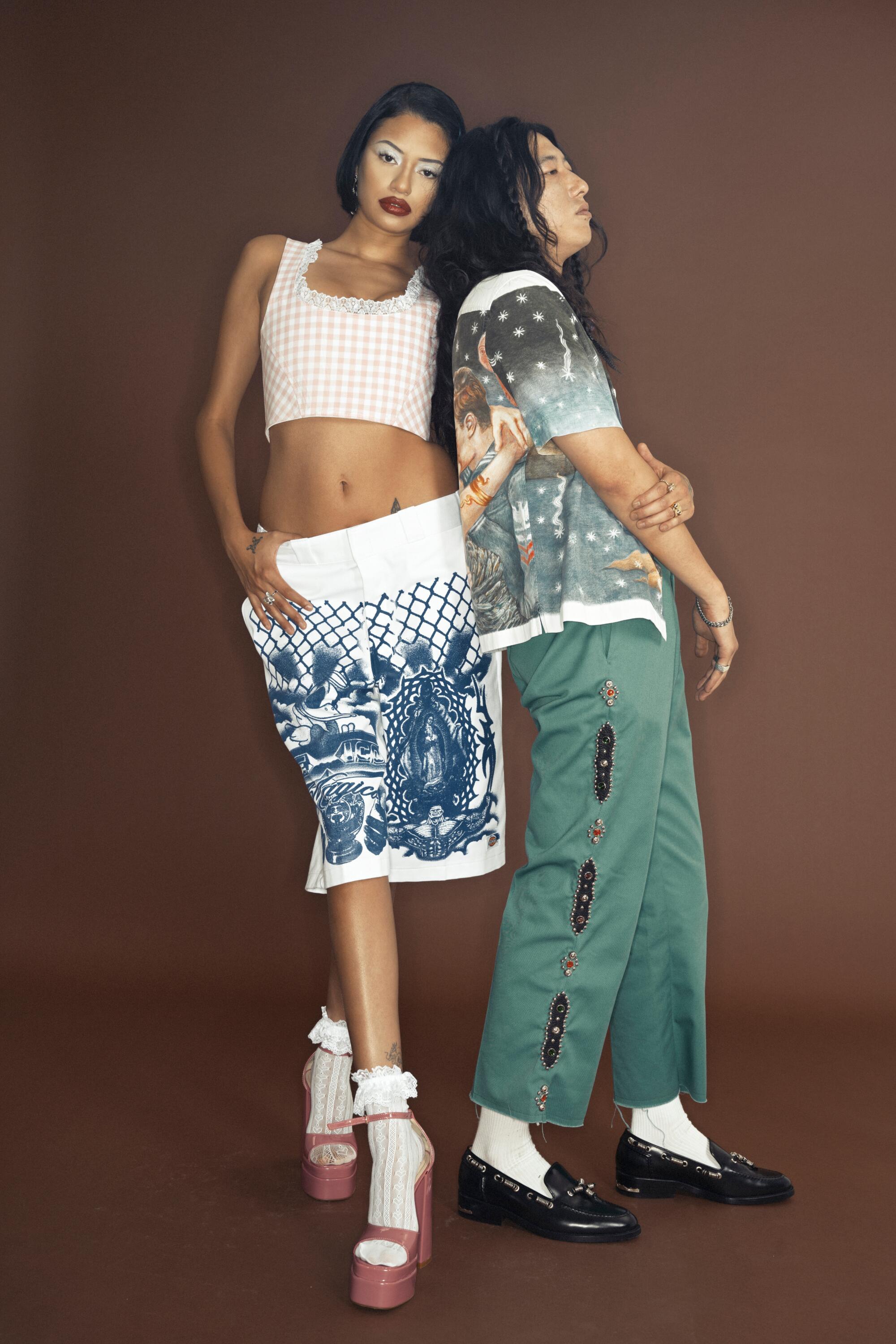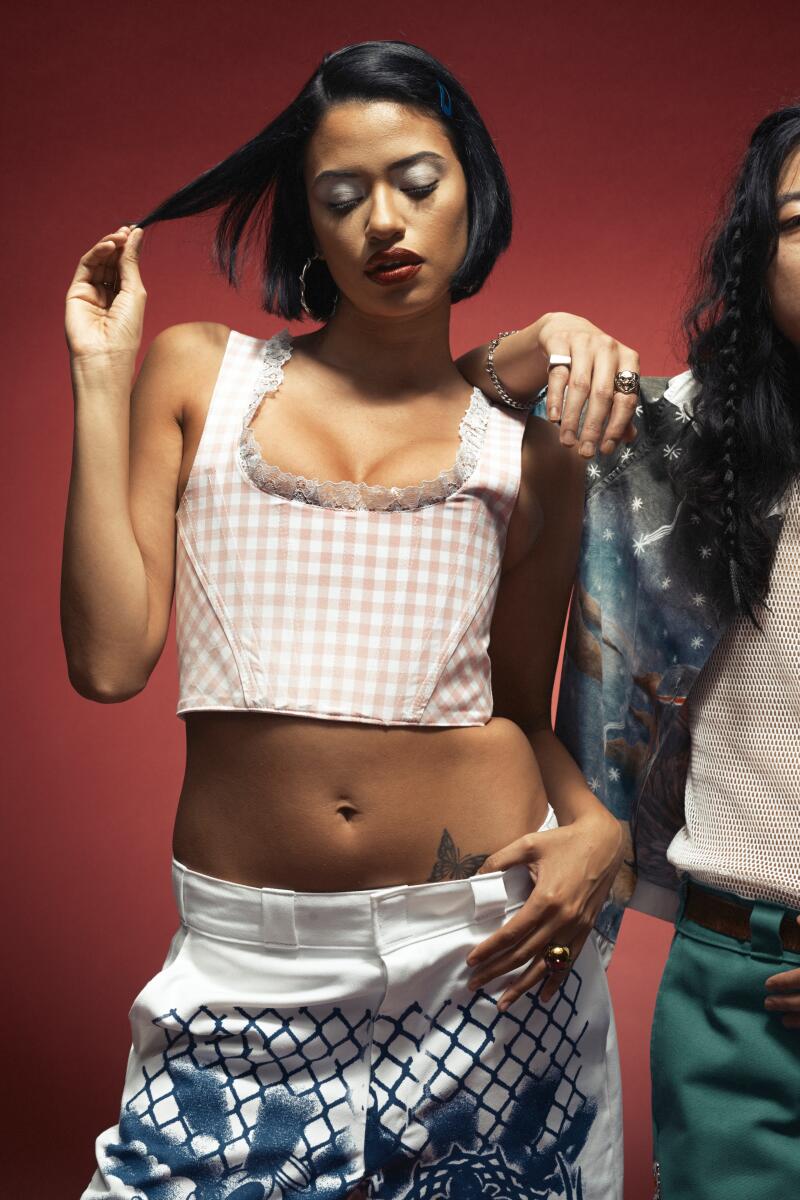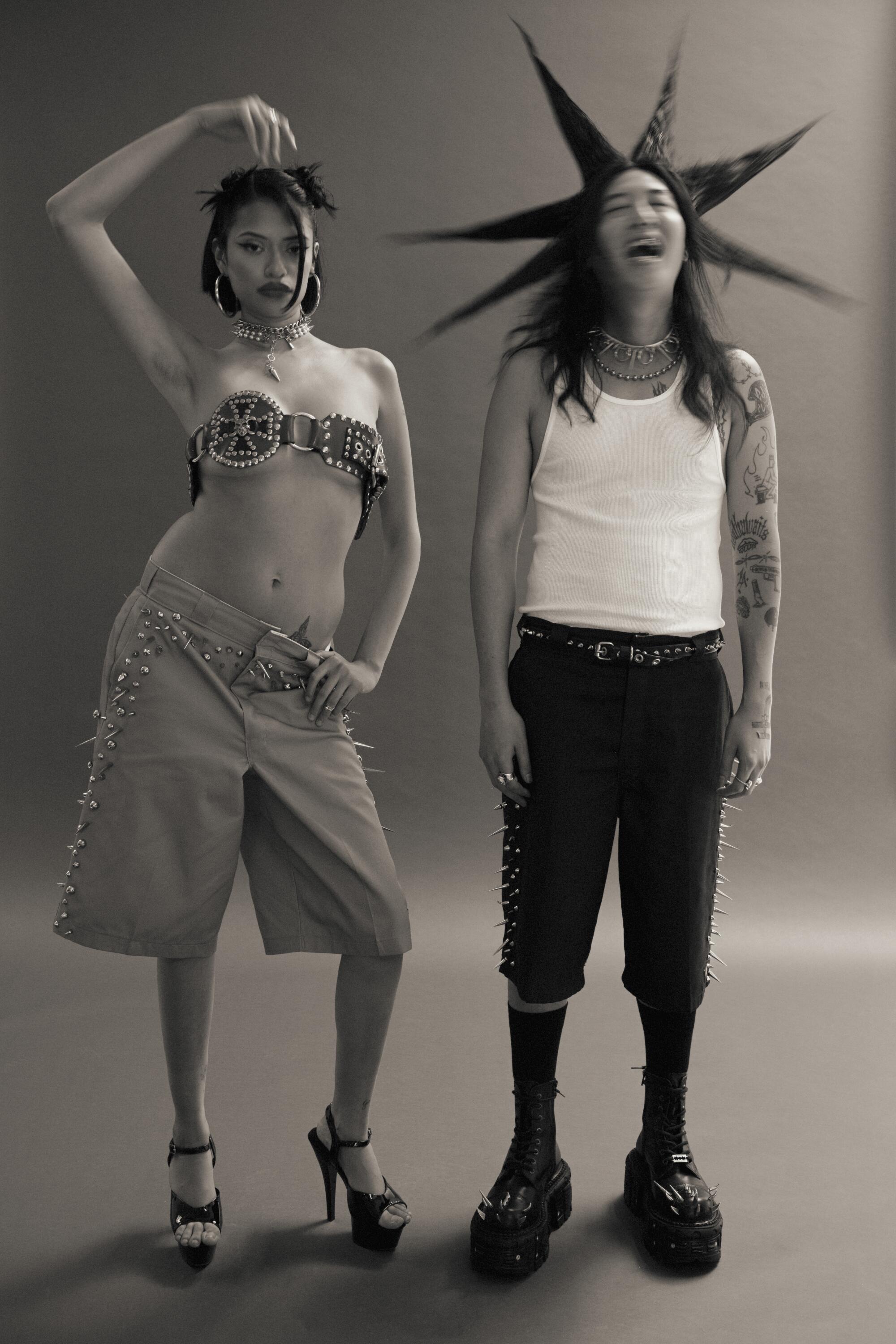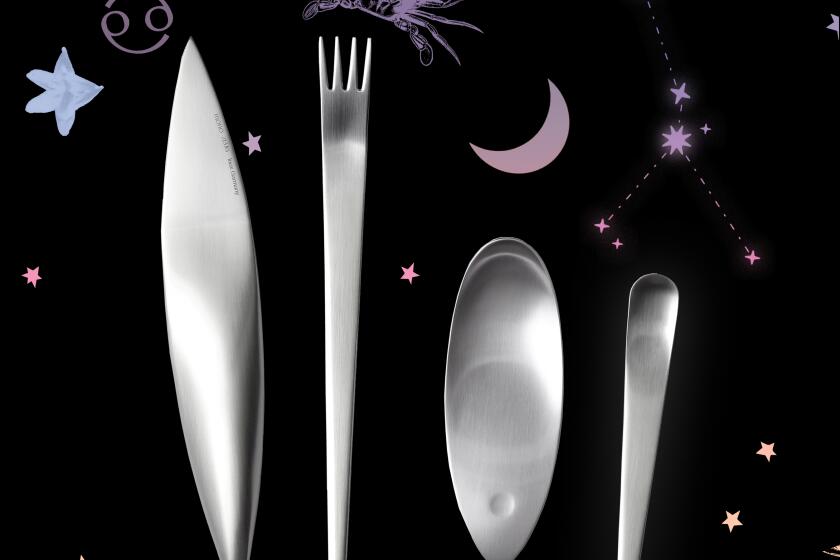
This story is part of Image issue 21, “Image Makers,” our third annual celebration of the homegrown fashion luminaries who are designing a global fashion future built from the L.A. that was. Read the whole issue here. You can purchase the issue in print here.
The crease is a line the memory doesn’t forget. At first sight, it announces its presence, demands you recognize its existence. It pulls you in, wants you to know it took some work to get here. It’s a mark of deliberation and execution. The crease was created with intention. Passivity is for wrinkles and for the wrinkle-adjacent — it’s for whatever is pulled out and given those few 辞濒é shakes before being stashed in a drawer (or, more tellingly, worn). Not so for the crease. It’s unforgettable.
Creases on Dickies. Peanut butter and jelly. Some things just go together. The crease, when administered to L.A.’s favorite regalia, is about putting one’s personal touch on something. It’s the affectation on top of the regional slang. The little dose of you sprinkled on top of what everyone knows doesn’t need the help. Perhaps that’s why the Dickies shirt and pants — or the shorts if you need the leg room — are considered staple pieces. They can take your generous helping of extra and still have more to give. They fit anywhere in the rotation. They become what you need them to be.


Like all classics, the Dickies uniform is a blank canvas waiting to be transformed through a creative act. The painter has his paintbrush. The homie has his iron, his belt, his shoes and socks. Both tacticians are motivated by and concerned with purity. They seek it out. They hope to realize it through technique, craft. Dickies are a prompt to get busy. Real ones know: a uniform doesn’t need to be so uniform. It beckons you to freak it.





L.A.’s iconography is littered with examples of exemplary Dickies permutations. Sweetpea and Rodney in “Baby Boy.” Smokey in “Friday.” The gangsters in “Tales from the Hood.” In the movies, Dickies become synonymous with a character’s personality or persona. The fit signals a given lineage or history or type of person, even as it evades easy categorization. You kind of, sort of, know who’s wearing it and why. Though it’s hard to put your finger on exactly why the uniform looks so damn good. Dickies are a way of being. The clothes become elevated the moment a character appears onscreen. They adjust to the sensibility of the wearer. The person rocking Dickies always looks comfortable, no matter the size. Someone might be swimming in a pair, but the outfit, somehow, always looks fitted.



Dickies are malleable. All it takes is a little vision and creative license. Which is why, in this photo essay, artist Sam Muller and designer/stylist Keyla Marquez decided to see what Dickies might look like with a little high-fashion makeover. Marquez, our fashion director at large who founded Lujo Depot in 2022, took care of the customizations. Muller brought his unique eye — much of his work is skate photography — and institutional knowledge of the Dickies ethos in L.A. to the project.
While it will always be a Texas institution, Dickies has a particular significance here — the legend is a kind of Great Migration tale. Dickies clothes are always on the move in L.A. When you see the logo in the wild, you know that the wearer has chosen his or her people, is part of a shared history. The Dickies uniform has always been a point of departure. An opportunity to make a mark.

Models: Vanessa Mendez, Willy Choi
Makeup: Leslie Castillo
Hair: Jocelyn Vega
Location: Issue Photo Studio






